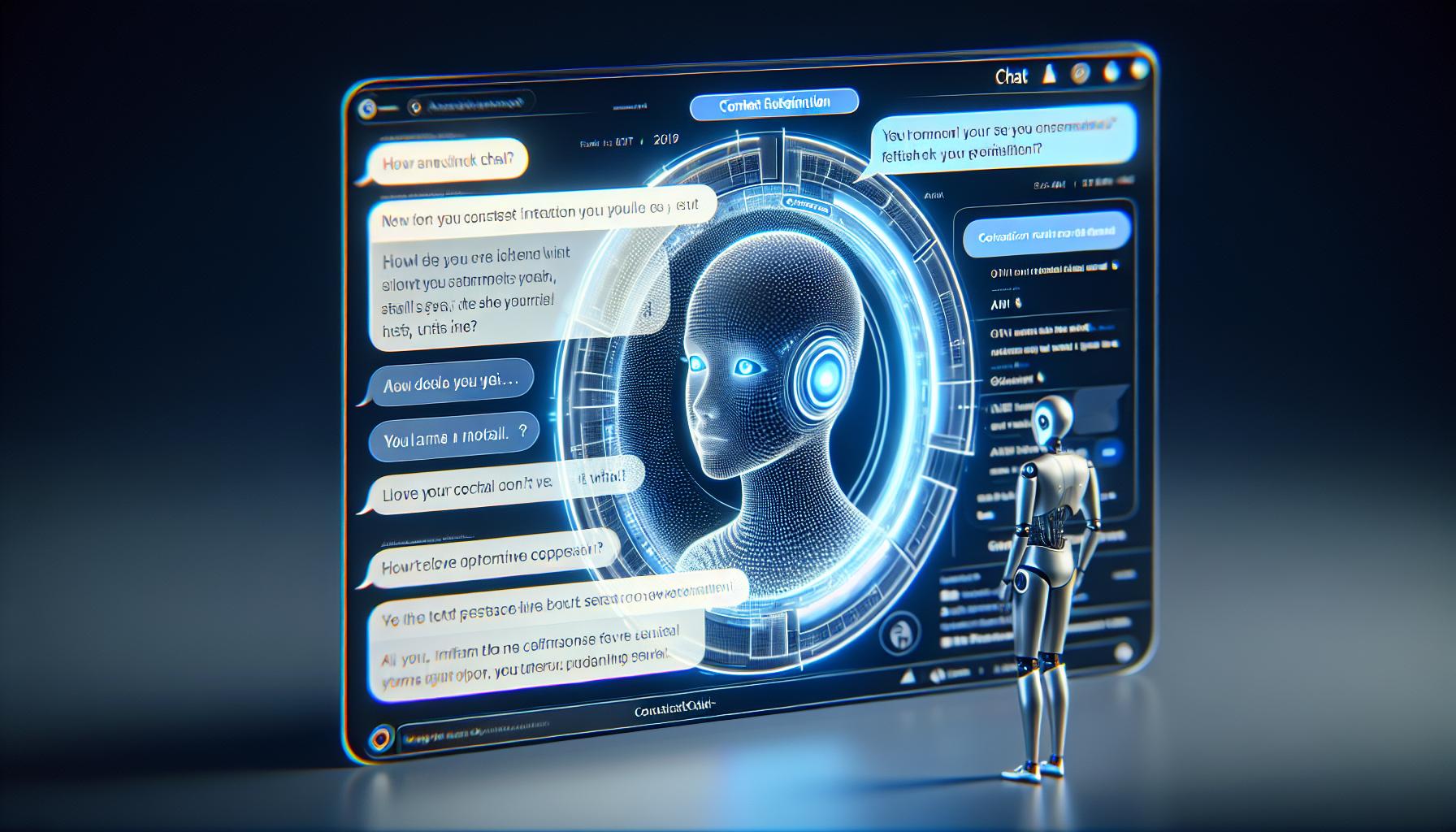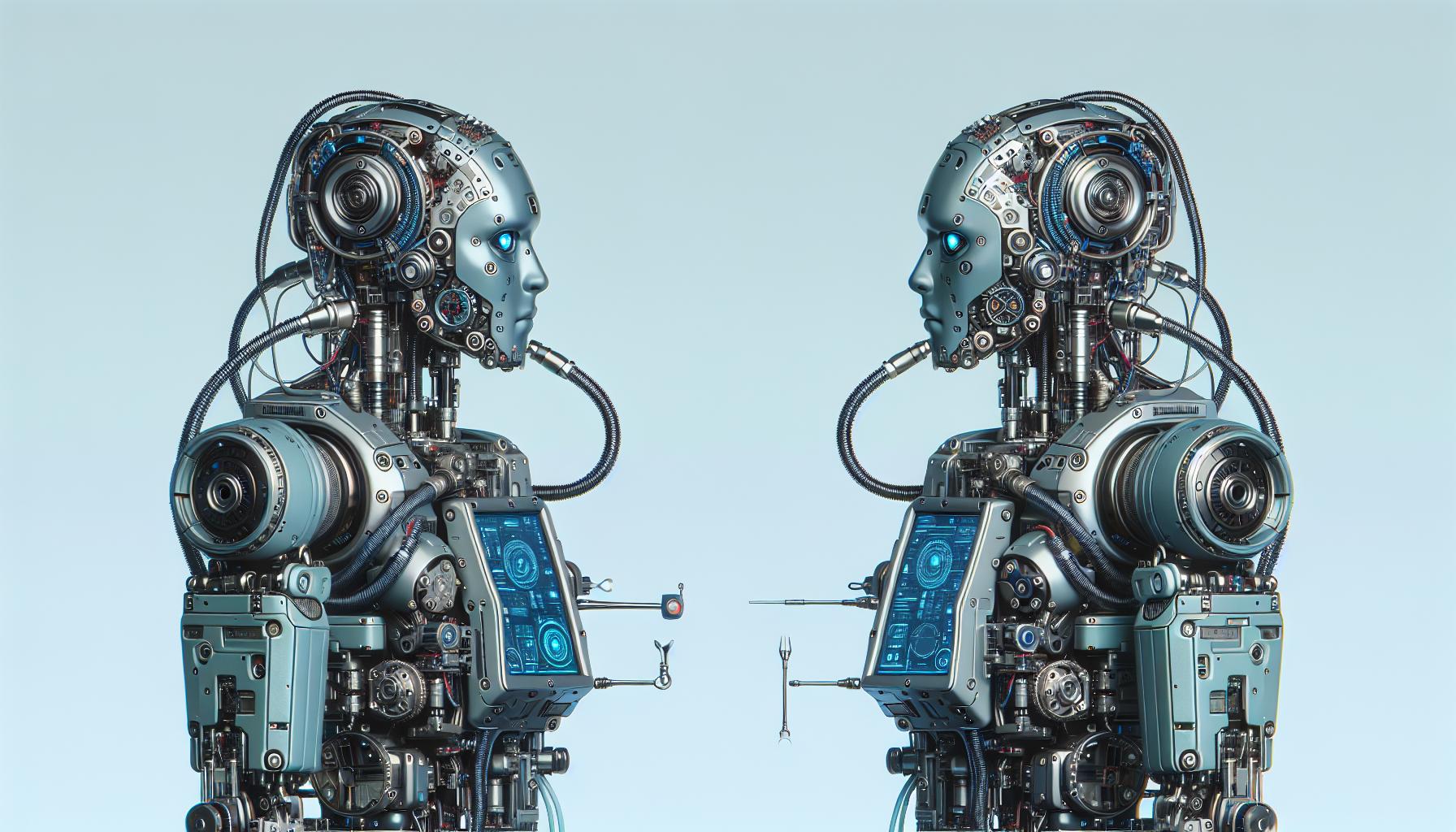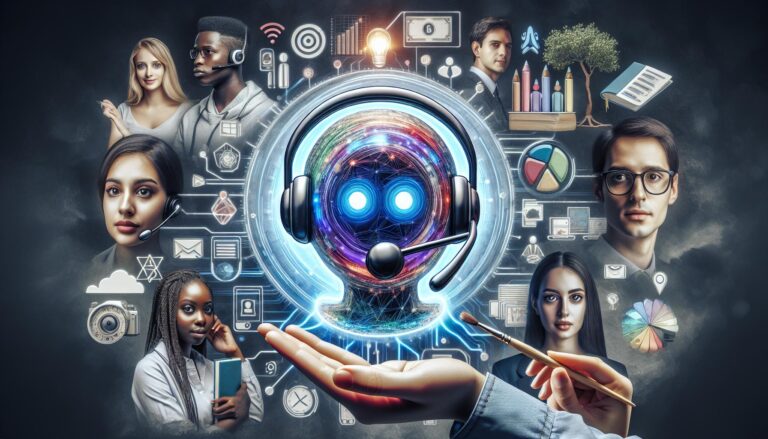ChatGPT vs InstructGPT: Comparison for Optimal AI Text Generation
Two models have been making waves in the world of AI: ChatGPT and InstructGPT. OpenAI developed both, and they’re revolutionizing the way we interact with machines. But what’s the difference between them?
ChatGPT is designed to have free-flowing conversations, making it feel like you’re chatting with a human. It’s great for casual conversations, answering queries, and even creating content. On the other hand, InstructGPT is all about following instructions. Give it a set of guidelines, and it’ll generate text based on them.
Choosing between ChatGPT and InstructGPT depends on your needs. If you’re after a conversational AI, ChatGPT is your go-to. But if you need an AI that can follow instructions to the letter, InstructGPT is your best bet. Let’s dive deeper into these two AI models and see what they’re all about.
PowerBrain AI Chat App powered by ChatGPT & GPT-4
Download iOS: AI Chat
Download Android: AI Chat
Read more on our post about ChatGPT Apps & AI Chat App
Key Takeaways
- ChatGPT, developed by OpenAI, is designed for conversational dialogues with users. It can mimic human-like interactions, making it ideal for customer service, content creation, and teaching.
- InstructGPT, on the other hand, follows specific user instructions. It excels at content simplification, executing precision-tailored tasks, and answering complex questions.
- Both models operate on OpenAI’s GPT-3 and use Reinforcement Learning but cater to different needs in conversational AI.
- ChatGPT stands out with features like natural conversation, context retention, and versatility. Its focus on privacy, not retaining personal data unless shared in conversations, differentiates it from other AI tools.
- InstructGPT shines in its content simplification abilities, precision in following instructions, and capacity to answer questions based on given information.
- ChatGPT’s use cases extend from customer service to tutoring, content creation, and even in video game dialogue creation. InstructGPT, however, is more commonly used to simplify complex content, process large volumes of data accurately, and answer FAQ-style inquiries swiftly.
- The choice between ChatGPT and InstructGPT should be guided by one’s specific needs. Though they share certain features, each is uniquely equipped to handle different tasks and situations.
ChatGPT: A Closer Look

Before we delve deep into ChatGPT, let’s quickly overview its inception. Spawned from the technological prodigy of OpenAI, ChatGPT is a linguistic model that thrives on creating intuitive, human-like discussions. It’s been trained with diverse internet text, but this ain’t a parrot. It doesn’t simply mimic responses; it learns from input and gets better each time.
Digging a little deeper, we’ll find that ChatGPT can be a particularly useful tool for numerous conversational scenarios. Picture having an assistant to not just reply to your emails but to create engaging content, draft reports, or even tutor in different topics. It’s like having an extra brain that doesn’t sleep or take lunch breaks.
As we explore further, we’ll notice how ChatGPT operates on machine learning models, specifically Transformer Models. These models have been trained using Reinforcement Learning with a method known as Proximal Policy Optimization. This might sound a bit jargony, but in simple terms, it’s a system designed to take conversations to new heights, breaking barriers of mundane predictability.
Read more
Character GPT
BERT vs GPT
Chat GPT no restrictions
Connect ChatGPT to internet
GPT-3 vs GPT-4
Claude vs ChatGPT
Gemini PRO vs Chat GPT-4
Chat GPT vs Jasper
Chat GPT no restrictions
Connect ChatGPT to internet
Chat GPT no login
But let’s get down to brass tacks and look at what this means for the user experience. As with any AI, the interaction is not perfect; the responses vary based on the inputs received. It can sometimes generate lengthy and irrelevant text and can often be sensitive to slight tweaks in input.
Above all, what sets it apart is its ability to retain context over a conversation. Much like a human conversation partner, it remembers and factors in previous inputs to make the conversation more cohesive and immersive. This ‘remembrance’ is ephemeral and lost once the conversation ends. It doesn’t have access to any personal data unless shared in conversation, which strikes a perfect balance between efficiency and privacy, a stride not all AI possess.
ChatGPT is more than just a chatbot. It’s the compass leading us to a future where efficient and intuitive AI can serve as an intelligent extension of ourselves. This is AI reimagined.
Features of ChatGPT

Digging deep into the features of ChatGPT, there’s quite a bit to be admired. Firstly, this innovative AI model by OpenAI is known for its impressive natural conversation capabilities. With a core design that’s spectral to human-like interactions, users get a truly engaging experience that feels more real and less artificial.
One thing I’ve often noticed is how skilled ChatGPT is at context retention. It doesn’t matter how long a chat has been going on; ChatGPT can keep the context intact, allowing the conversation to stay focused and relevant.
Another awesome feature worth highlighting is its versatile use cases. From crafting interesting content to drafting reports, ChatGPT isn’t confined to any one area. Many users have even found it useful as a tutor in diverse topics, showing how capable this AI model is.
| ChatGPT Features | Description |
|---|---|
| Natural Conversation | Spectral to human-like interactions, real and engaging |
| Context Retention | Remains focused and relevant regardless of chat length |
| Versatility | Useful in crafting content, drafting reports, and serving as a tutor |
Perhaps what makes ChatGPT stand out even more is its focus on privacy. With access to substantial personal data, privacy can be a concern with AI models. Thankfully, ChatGPT strikes a balance between efficiency and privacy. It doesn’t retain personal data unless shared in the conversation, prioritizing user confidentiality.
In terms of technicalities, ChatGPT operates on Transformer Models trained using Reinforcement Learning. This offers more enhanced conversational experiences, though it may sometimes lead to the generation of lengthy or irrelevant text. Yet, this same technology propels ChatGPT towards a brighter future, where intuitive AI serves as an extension of our intelligence.
Use Cases of ChatGPT

Having unraveled the workings of ChatGPT, let’s delve into its diverse array of applications. I’ve often marveled at this AI’s wide-ranging capabilities; it’s not just a chatbot; it’s a true multitasker.
One primary utilization of ChatGPT is in customer service. Several businesses employ ChatGPT to handle customer queries. It can take the frontline, respond to inquiries, offer solutions, and handle common tasks. This frees up the human workload, allowing personnel to focus on more complex issues that need a personal touch.
ChatGPT is pretty adept at skill-building and tutoring, too. Whether a user wants to learn a new language, understand concepts in science, or get a grasp on complex coding, ChatGPT could step in as a learning assistant. It can provide explanations, examples, and even quizzes to reinforce knowledge. No wonder it’s becoming a popular choice among e-learning platforms!
For authors, writers, and content creators like me, ChatGPT can serve as a handy writing assistant. I’ve used it to draft emails, generate ideas, edit content, and even write whole sections of articles. It’s great for overcoming writer’s block and can significantly speed up writing.
Intriguingly, ChatGPT has found an audience in game developers as well. It can be integrated into video games to power non-player character dialogue, making interactions more dynamic and engaging.
And let’s not forget role plays. By assuming distinct personas and styles, this AI can be a captivating role-play partner, weaving narratives that can span various genres and themes.
Those were some common use cases, but the applications of ChatGPT aren’t limited to these. Its potential is vast as it continues to evolve and learn from its interactions.
InstructGPT: A Deeper Dive
Let’s delve a bit deeper into InstructGPT. Unlike ChatGPT’s primary role of assisting with conversations, its sibling, InstructGPT, is about executing instructions. It’s designed to follow specific commands, making it an extremely practical choice for many different tasks. Where ChatGPT is more like having a conversation with a colleague, interacting with InstructGPT is more akin to dictating tasks to a helpful assistant.
However, just like ChatGPT, InstructGPT owes its functional prowess to OpenAI’s powerful language model, GPT-3. This model boasts a massive 175 billion machine learning parameters, which works wonders in terms of its accuracy and capability in following instructions to the letter.
Let’s take a moment to compare their uses. Where ChatGPT finds its place in the realms of customer service, skill-building, content creation, and even in the gaming industry for creating dynamic dialogues, InstructGPT shines in more specific task-oriented niches. Think of scenarios like transcribing a spoken speech into written text, simplifying complex sentences, or even answering direct questions based on a given text. Its ability to follow instructions and remarkable attention to detail propel InstructGPT into diverse applications.
I’ve explored InstructGPT here mainly from a practical standpoint. Yet, just like ChatGPT, InstructGPT has its share of challenges. Although designed to be proficient at following complex instructions, it sometimes generates incorrect or nonsensical responses. It’s important to remember that while these tools are robust and sophisticated, they’re not perfect.
In any case, these AI models hold much promise for diverse industries. We’re essentially dealing with groundbreaking technology, and it’s exciting that we’re in the early days of its potential application. From personal interactions to industrial applications, AI language technology is reshaping the scope of systems like no other.
Features of InstructGPT

Delving deeper into InstructGPT highlights distinct features that set it apart from its peer, ChatGPT. While both leverage the same language model – OpenAI’s GPT-3 – their capabilities cater to different needs in conversational AI.
Content simplification is a primary strength of InstructGPT. Given a complex sentence or document, it’s capable of breaking down the material into more digestible, simplified language. For instance, this is a significant advantage in educational contexts where easy-to-understand explanations are crucial.
Alongside simplifying, it’s adept at precision-tailored tasks. When given specific instructions, InstructGPT completes tasks more accurately. Be it transcribing speech or generating content as guided, InstructGPT strives to understand and follow instructions to the T.
Answering questions is another realm where InstructGPT shines. Based on the information given, it can generate precise, helpful answers, making it an excellent tool for customer service, academic environments, or to aid in personal learning pursuits.
Yet, it’s important to remember that while proficient, InstructGPT isn’t infallible. It’s prone to occasional errors in understanding complex instructions or subject matter. Therefore, user feedback and iterative improvements are significant in harnessing its full potential. Advancements in AI are ensuring these limitations are continually addressed, pushing the boundaries of what InstructGPT can achieve.
The potential use cases for InstructGPT span a myriad of industries and applications. As an AI language technology, its role in shaping future personal and industrial interactions promises to be transformative. It’s not just about what InstructGPT can do but even more so about how we can utilize its features to optimize our interactions, tasks, and overall productivity.
The subsequent section of our exploration will delve into the unique aspects of ChatGPT and what makes it a compelling conversational AI choice – vertically integrating our understanding of these two AI models. The exploration continues…
Use Cases of InstructGPT
From the industrial sector to the educational arena, InstructGPT lends itself to a plethora of applications. Its prime function lies in its exceptional ability to simplify content on a wide array of topics, making it a promising tool for refining complex educational materials down to easily understood insights.
Picture this: A physics student struggling with Einstein’s Theory of Relativity or a medical student grappling with neurology could leverage InstructGPT’s content simplification capabilities. By inputting tricky textbook material or lecture notes, InstructGPT can churn out a simplified explanation, effectively enhancing their understanding and material retention.
But the applications don’t stop in the classroom. InstructGPT’s precision-tailored tasks could serve as a game-changer for businesses aiming to process large amounts of data swiftly and accurately. By inputting a carefully crafted command, you can harness the model to analyze trends, draw conclusions, or extract specific details from a sea of information.
Imagine a marketing team confused with data involving customer behavior and analytics – with a few keystrokes, InstructGPT can provide illuminating insights and precise instructions – potentially a revolution for digital marketing analytics.
Finally, in the realm of FAQs and customer service, InstructGPT’s ability to answer questions accurately could drastically reduce a company’s need for human operators. Whether it’s a customer wondering about a product’s warranty conditions or a user needing help with software installation, the model can provide accurate, fast, and reliable responses, setting a new standard for customer interaction.
Indeed, as InstructGPT continues to evolve and improve with user feedback and advancements in AI, its capabilities and applications seem boundless.
Choosing Between ChatGPT and InstructGPT

When you’re picking between ChatGPT and InstructGPT, it’s important to understand their distinct capabilities and potential applications.
ChatGPT, developed by OpenAI, is designed to hold conversational dialogues with users. It’s been trained on diverse internet text but doesn’t know specifics about the documents in its training set. Here’s an interesting factor: ChatGPT isn’t just a skilled conversationalist; it can even generate creative text such as poetry, jokes, and stories. With all this taken into account, it is particularly beneficial in interactive applications like customer service, entertainment, and writing assistance.
On the other hand, we have InstructGPT, a sibling to ChatGPT. This model doesn’t just talk; it provides detailed assistance. Trained similarly using Reinforcement Learning from Human Feedback (RLHF), InstructGPT’s main focus is to interpret and respond to a user’s command clearly. Its trend of delivering highly accurate and detailed responses makes it a go-to tool in educational settings and technical task execution.
When it comes to user feedback, both models offer opportunities to learn and improve. However, the way each model operates differs. ChatGPT primarily focuses on refining its interactive abilities, while InstructGPT continuously improves its response accuracy based on the instructions given.
In a nutshell, the choice between ChatGPT and InstructGPT depends on your specific needs. If you’re looking for a tool to engage in a convincing and human-like conversation, ChatGPT is the pick. But when it comes to getting detailed responses to commands or complex queries, InstructGPT is your best bet. Remember, every AI model has its own set of advantages and is uniquely equipped to handle different tasks and situations.
Conclusion
It’s clear that both ChatGPT and InstructGPT hold their own in the AI landscape. If you’re after engaging, creative conversations, ChatGPT is your go-to. It’s an ace in customer service and writing assistance. On the other hand, InstructGPT is a powerhouse when it comes to providing detailed, accurate responses. It’s a top pick for educational and technical tasks. Remember, your specific needs will determine the best choice. Both models thrive on user feedback, so don’t shy away from helping them improve. Whether it’s ChatGPT’s interactive abilities or InstructGPT’s response accuracy, each brings something unique to the table. In the end, it’s about harnessing these AI models to make our lives easier and more productive.
What is ChatGPT, and what are its main uses?
ChatGPT is an AI model known for its conversational skills. It excels at generating text like poetry and stories, and it’s commonly used in interactive uses such as customer service and writing assistance.
How is InstructGPT different from ChatGPT?
InstructGPT focuses on providing detailed assistance and accurate responses to user commands. It’s ideally suited for educational and technical tasks, unlike ChatGPT, which is suited for engaging conversations.
How do ChatGPT and InstructGPT improve?
Both ChatGPT and InstructGPT improve through user feedback. While ChatGPT enhances its interactive ability, InstructGPT refines its response accuracy.
Which AI model should I choose?
The choice between ChatGPT and InstructGPT depends on your specific needs. If you need engaging conversations, go for ChatGPT. For detailed responses to commands and complex queries, InstructGPT is the right choice.
What advantages does each AI model offer?
Each AI model offers distinct advantages tailored to different tasks and scenarios. ChatGPT is ideal for customer service and writing assistance, while InstructGPT shines in educational and technical tasks requiring detailed responses.
















